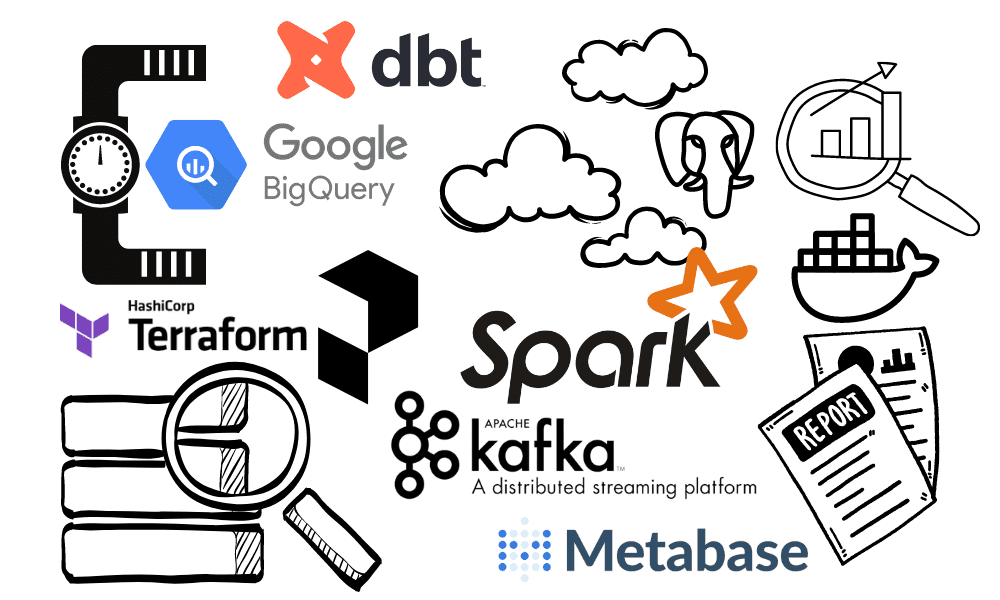Introduction
In the world of data engineering, workflow automation and data orchestration are critical components of an efficient data pipeline. With the rise of big data, organizations require tools that can handle complex workflows, manage dependencies, and ensure data reliability. Apache Airflow and Prefect have emerged as two of the most popular tools for data orchestration.
Both tools offer robust solutions for managing workflows, but they have distinct advantages and new features that make them stand out in modern data engineering stacks. Understanding these tools is crucial for professionals pursuing a data scientist course in Pune or any other data-related training program.
In this article, we will explore various latest advancements in Apache Airflow and Prefect, compare their features, and discuss how they can be leveraged to improve data orchestration.
Understanding Data Orchestration
Data orchestration is the process of automating and coordinating data movement across different systems, ensuring data flows seamlessly from source to destination. It involves scheduling, monitoring, and managing dependencies to ensure reliability and efficiency.
With the exponential growth of data sets, traditional manual processes are no longer viable. Organizations need scalable and fault-tolerant solutions to orchestrate their workflows effectively. This is where tools like Apache Airflow and Prefect come into play, making data engineering tasks more streamlined and manageable.
For professionals looking to upskill in this domain, a data scientist course can provide the necessary foundation in workflow automation and orchestration.
Apache Airflow: Features and Recent Updates
Apache Airflow is a popular open-source workflow management tool that allows users to define, schedule, as well as monitor workflows as Directed Acyclic Graphs (DAGs). Some of its core features include:
- Task Scheduling: Airflow allows users to define dependencies between tasks, ensuring that they execute in the correct sequence.
- Extensibility: With numerous plugins and integrations, Airflow can connect to various data sources, APIs, and cloud services.
- Scalability: Airflow can be deployed on-premises or in the cloud, making it suitable for large-scale data workflows.
Recent Updates in Apache Airflow
- TaskFlow API: The TaskFlow API simplifies DAG creation, reducing boilerplate code and making workflow development more intuitive.
- Better DAG Serialization: Improved DAG serialization speeds up UI performance and reduces database load.
- Kubernetes Executor Enhancements: Airflow now supports more efficient Kubernetes pod management, allowing for better resource utilization.
- Improved UI and Monitoring: New UI updates provide better visibility into running tasks, logs, and dependency tracking.
These updates make Airflow more user-friendly and scalable, enhancing its appeal for data engineers. For those learning about workflow automation in a data scientist course in Pune, Airflow remains a key tool to master.
Prefect: Features and Recent Updates
Prefect is a modern workflow orchestration tool designed to address some of the limitations of Apache Airflow. It offers a more flexible and highly user-friendly approach to managing data pipelines.
Key Features of Prefect
- Python-First Approach: Unlike Airflow, Prefect allows users to define workflows using pure Python, making it more intuitive for data scientists and engineers.
- Dynamic Workflows: Prefect supports dynamic workflows, allowing tasks to be added or modified at runtime.
- Fault-Tolerance: Built-in error handling and retries ensure robustness in case of failures.
- Cloud-Native: Prefect Cloud provides a managed service with enhanced monitoring and governance features.
Recent Updates in Prefect
- Prefect 2.0: The latest version introduces a more lightweight and modular architecture.
- Asynchronous Task Execution: Prefect now supports async execution, improving performance for I/O-bound tasks.
- Enhanced Logging and Monitoring: The new dashboard provides real-time task status updates and improved observability.
- Improved Integration with Cloud Services: Prefect has enhanced support for AWS, GCP, and Azure, making it easier to manage workflows in hybrid cloud environments.
Prefect’s enhancements make it an attractive alternative to Airflow, especially for teams looking for a more developer-friendly and scalable solution. Professionals enrolled in a data scientist course can benefit from learning both tools to broaden their skill set.
Apache Airflow vs. Prefect: Which One Should You Choose?
While both Apache Airflow and Prefect serve the same purpose of workflow orchestration, they cater to different use cases and preferences.
Apache Airflow Pros and Cons
Pros:
- Mature and widely adopted in the industry.
- Extensive integrations with data processing frameworks.
- Strong community support and enterprise adoption.
Cons:
- Complex setup and steep learning curve.
- Less flexibility for dynamic workflows.
- Requires additional infrastructure for high availability.
Prefect Pros and Cons
Pros:
- Easy to use with a Pythonic approach.
- Supports dynamic and real-time workflows.
- Cloud-native with a managed service option.
Cons:
- Smaller community compared to Airflow.
- Limited support for some enterprise-grade features.
- May require additional configuration for complex workflows.
For data professionals looking to specialize in workflow automation, taking a data scientist course in Pune that covers both Airflow and Prefect can be a valuable investment.
Future Trends in Data Orchestration
The field of data orchestration is constantly evolving, with new trends shaping the future of workflow automation. Some key trends to watch include:
- AI-Powered Orchestration: Machine learning models will help predict workflow failures and optimize scheduling.
- Serverless Orchestration: More tools will adopt serverless architectures to reduce infrastructure overhead.
- Event-Driven Pipelines: Event-based triggers will replace traditional cron jobs for more dynamic workflow execution.
- Hybrid and Multi-Cloud Support: Tools will continue to enhance support for hybrid and multi-cloud environments, allowing seamless workflow execution across different platforms.
These advancements will further enhance the overall efficiency and scalability of data pipelines, making data orchestration more seamless than ever.
Conclusion
Apache Airflow and Prefect are two of the most powerful tools in the world of data orchestration. While Airflow remains the industry standard for complex workflows, Prefect offers a modern alternative with greater flexibility and ease of use.
For data professionals looking to master workflow automation, enrolling in a data scientist course that covers both Airflow and Prefect can provide the hands-on experience needed to excel in the field. With the latest advancements in these tools, organizations can streamline their data workflows, reduce operational overhead, and improve data reliability.
As the demand for efficient data pipelines grows, having expertise in data orchestration tools like Apache Airflow and Prefect will be a valuable asset for any data engineer or scientist.
Business Name: ExcelR – Data Science, Data Analytics Course Training in Pune
Address: 101 A ,1st Floor, Siddh Icon, Baner Rd, opposite Lane To Royal Enfield Showroom, beside Asian Box Restaurant, Baner, Pune, Maharashtra 411045
Phone Number: 098809 13504
Email Id: enquiry@excelr.com




